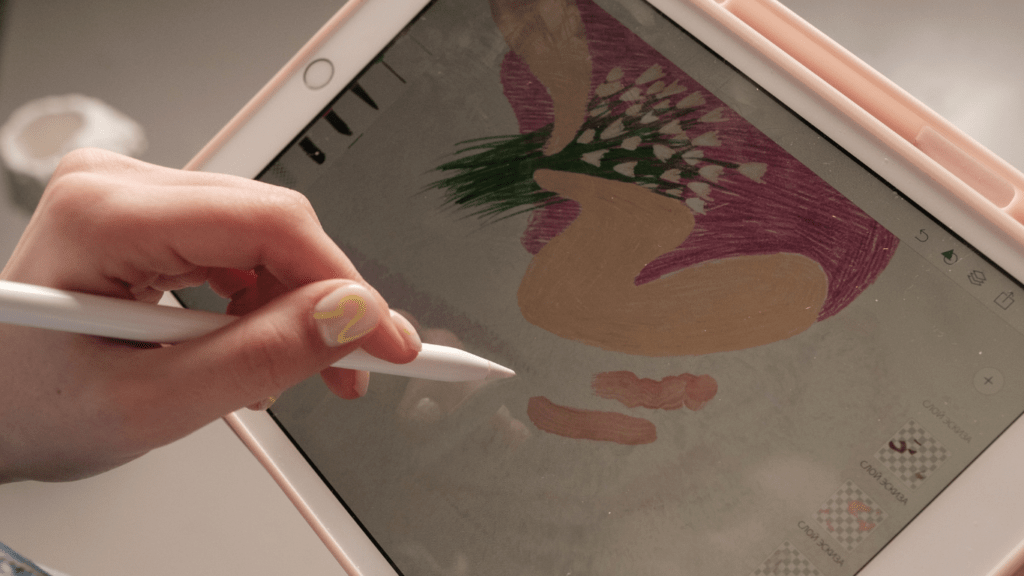Evolution of Digital Art
From Pixels to 3D: A Brief History
Digital art emerged in the 1950s when artists experimented with early computers.
By the 1980s, pixel art gained popularity, with video game graphics driving its growth. Examples include iconic characters like Super Mario.
The 1990s saw advancements with digital painting and vector graphics software, enabling more detailed and versatile creations.
Fractal art also gained traction, offering complex geometric designs through mathematical formulas.
The turn of the century brought 3D modeling and rendering tools.
These advancements revolutionized industries like film, gaming, and virtual reality. Programs like Blender and Maya became essential, allowing for the creation of lifelike characters and environments.
By the 2010s, digital art expanded to include augmented reality (AR) and virtual reality (VR), offering new ways to interact with art.
Today, digital art encompasses animations, GIFs, interactive installations, and more.
The Influence of Technology on Creative Expression
Technology’s rapid evolution has significantly impacted creative expression. High-resolution displays and advanced graphics cards give more opportunities for detail and realism.
- Stylus and tablet technology, for example, enable precise control over digital brushstrokes, closely mimicking traditional painting.
- Software like Adobe Creative Suite provides robust tools for editing, compositing, and digital sculpting.
- Artificial intelligence (AI) has also made its mark, with programs like DeepArt and RunwayML creating art independently.
Artists use AI to generate patterns, enhance images, and produce unique compositions. - Blockchain technology’s rise has introduced
- NFTs, providing a new avenue for authenticity and ownership in the digital realm.
- Social media platforms like Instagram and TikTok have become essential for showcasing and selling digital art.
They offer global reach, allowing artists to connect with audiences and buyers worldwide. - Online marketplaces such as DeviantArt and ArtStation offer platforms for artists to display their portfolios.
Technology enables greater interactivity and immersion. Interactive installations and VR spaces allow audiences to experience art in dynamic ways. The evolution of digital art mirrors technological advances, continually redefining what’s possible in the artistic landscape.
Introduction to NFTs
What Are NFTs?
NFTs, or non-fungible tokens, are unique digital assets verified using blockchain technology.
Unlike cryptocurrencies such as Bitcoin, which are interchangeable, NFTs represent distinct items.
This uniqueness is essential for digital art, as each piece can be verified as original.
The token, stored on a blockchain like Ethereum, includes metadata that links to the digital art, providing proof of authenticity and ownership.
How NFTs Work: Blockchain Technology Explained
Blockchain technology underpins NFTs by offering a decentralized ledger to record transactions securely.
When an NFT is created, or minted, it’s added to the blockchain, ensuring transparency and immutability.
Smart contracts, self-executing contracts with the terms of the agreement directly written into code, facilitate NFT transactions.
They enforce ownership rules and automate royalty payments to artists upon resale.
This system revolutionizes digital art by ensuring that artists retain control over their work and continue to benefit financially.
Impact of NFTs on Digital Art
New Platforms for Artists
NFTs have birthed new platforms for artists, transforming how digital art is showcased and monetized.
Sites like OpenSea, Rarible, and Foundation provide marketplaces specifically for NFT art.
These platforms enable artists to mint their work as NFTs, list them for sale, and connect with a global audience directly.
For example, OpenSea recorded over $3.4 billion in transactions in a single month, illustrating the massive market potential.
By using these decentralized platforms, artists bypass traditional gallery systems, reducing middleman costs and gaining more control over the pricing and distribution of their work.
Changes in Art Consumption and Distribution
NFTs alter the way art is consumed and distributed, fostering direct connections between artists and collectors.
Digital art, once easily copied and shared, now carries verifiable ownership, ensuring exclusive purchase rights.
This shift increases the value perceived by collectors, encouraging investment in digital pieces.
Platforms like SuperRare and Nifty Gateway offer timed releases, creating urgency and scarcity.
Artists can also benefit from resale royalties through smart contracts, earning a percentage whenever their art is resold.
This ongoing income stream is transforming how artists view the long-term value of their work.
Legal and Ethical Considerations
Ownership and Copyright Challenges
Ownership of digital art, especially when linked with NFTs, often presents complex challenges. Digital art, unlike traditional art, can be infinitely reproduced.
However, NFT technology uses blockchain to certify the originality and ownership of a digital piece.
Despite this, copyright issues can still arise. Artists might mint NFTs without obtaining proper rights if the digital work incorporates elements from various sources.
This lack of clarity over who holds the original copyrights complicates the legal landscape.
Another challenge is the enforcement of these rights.
Although blockchain provides a transparent ledger for transactions, it doesn’t prevent unauthorized reproductions outside the blockchain.
Legal frameworks, which vary by jurisdiction, struggle to keep pace with the technology’s rapid development, often leaving ambiguity in cases involving cross-border transactions.
Ethical Implications of Digital Art NFTs
NFTs introduce ethical concerns within the digital art community.
Environmental impact is one primary issue since blockchain technology requires significant energy. Ethereum, the blockchain frequently used for NFTs, has been criticized for its high carbon footprint.
Many artists and collectors grapple with the moral implications of contributing to environmental degradation.
Additionally, NFTs can create inequities among artists. Established creators may dominate the market, leaving emerging talents struggling for visibility.
Moreover, the speculative nature of NFTs can lead to price volatility, making it challenging to assess an artist’s work’s real value.
While NFTs offer new revenue streams, this burgeoning market risks prioritizing profit over creative merit.
Ethical concerns also surround the authenticity of digital artworks.
As digital art can be easily altered or forged, verifying true ownership or originality becomes crucial to maintaining credibility in the digital art market.
The responsibility falls on platforms and the community to maintain ethical standards and transparency in this evolving landscape.
Future Trends in Digital Art and NFTs

Predictions for Technology and Artistic Innovation
Artists are leveraging emerging technologies to transform digital art.
AI-generated artworks are becoming sophisticated, with tools like DALL-E and DeepArt allowing artists to explore new creative horizons.
Blockchain technology continues to evolve, promising enhanced security and transparency for digital art transactions.
Innovations in AR and VR offer immersive experiences, enabling viewers to interact with art in virtual galleries or through augmented reality apps.
Developers are integrating machine learning into creative software, providing artists with intelligent tools for automating repetitive tasks and generating novel artistic elements.
Quantum computing, although still in its early stages, holds potential to revolutionize digital art creation, enabling complex simulations and new forms of multimedia art.
The Role of NFTs in Future Creative Industries
- NFTs are set to play a significant role in diverse creative industries. Beyond visual arts, musicians are using NFTs to sell unique digital albums, concert tickets, and more.
- NFTs could also transform film and video production by enabling filmmakers to tokenize exclusive content or behind-the-scenes footage, offering unique collectibles to fans.
- Fashion designers are creating digital clothing and accessories as NFTs, allowing users to purchase and wear them in virtual environments like the Metaverse.
- Architects and real estate developers are exploring NFTs to represent virtual properties, facilitating transactions in digital worlds.
- As NFTs integrate with various industries, their applications will expand, driving new forms of artistic monetization and audience engagement.
- Platforms will likely offer more robust tools for creators to authenticate and market their NFTs, fostering greater adoption and innovation across the creative spectrum.

